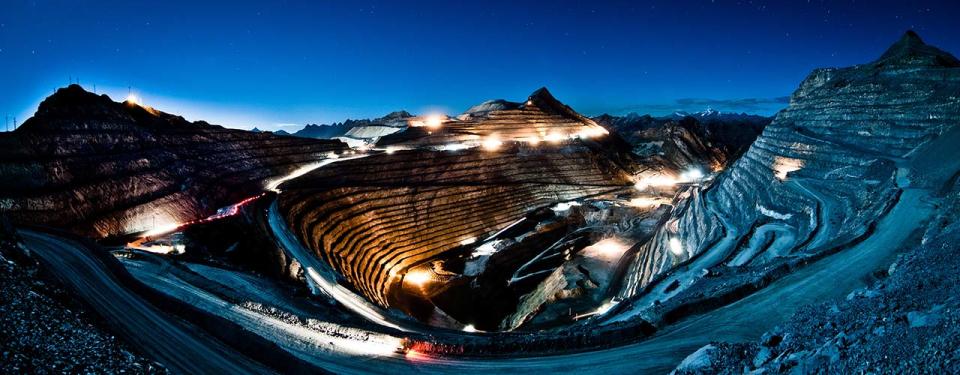Mining Setbacks Hurt Franco-Nevada
Many investors like Franco-Nevada (NYSE: FNV) because it doesn't have direct exposure to the challenges that mining companies face. Rather than pulling precious metals out of the ground itself, Franco-Nevada uses a streaming agreement business model that involves providing financing for miners in exchange for the right to purchase mine output at discounted prices. However, even though Franco-Nevada isn't responsible for mining activity, it can suffer when its partners can't get as much volume as they anticipated.
Coming into Tuesday's fourth-quarter earnings report, Franco-Nevada investors wanted to see growth in both revenue and profit from the streaming company's operations. Instead, revenue was sharply lower from year-earlier levels, and impairments of some of the company's royalty interests sent the company to a net loss for the period.

Teck Resources' Antamina mine, on which Franco-Nevada has a streaming interest. Image source: Teck Resources.
What happened to Franco-Nevada?
Franco-Nevada's fourth-quarter results reflected a difficult period for the streaming specialist. Revenue fell 11% to $148.2 million, falling far short of the roughly 10% growth that most investors were hoping to see. Even after taking into account extraordinary items, adjusted net income was down 14% to $44.7 million, and that resulted in adjusted earnings of $0.24 per share. The consensus forecast among those following the stock had been for earnings of $0.27 per share.
Franco-Nevada's mining-related numbers were the biggest detractor from performance. Total production was down almost 15,000 gold equivalent ounces to about 104,900 ounces, with particularly weak numbers in the silver market, where production levels were down by almost a third. Gold production declines exceeded 10%, and relatively flat performance in platinum group metals and a gain in non-precious metals mining weren't enough to offset declines elsewhere.
Oil and gas assets once again helped bolster Franco-Nevada's overall numbers, but the positive impact wasn't as strong as it had been in previous quarters. Oil and gas-related revenue came in at $18.2 million, up about 30% from the year-ago quarter, but that wasn't enough to make up for the mining segment.
Franco-Nevada attributed much of the production decline to its Latin American assets. The Candelaria mine suffered from having to process low-grade ore, while the Guadalupe-Palmarejo mine did less work on areas covered under its streaming agreement. Production from Canadian properties saw little change from the fourth quarter of 2017, while U.S. mines and properties in the rest of the world saw higher production from year-earlier levels.
What's next for Franco-Nevada?
CEO David Harquail looked forward to better times ahead. "Cobre Panama has now begun milling ore," Harquail said, and "we are also seeing an increasing number of gold investment opportunities and have already added several smaller gold royalties this year." The CEO also noted that energy royalties have been better than expected, and he anticipates further growth ahead.
Yet Franco-Nevada's guidance for 2019 has the company only partially making up for the ground it lost in 2018. The streaming giant sees production of between 465,000 and 500,000 gold equivalent ounces for the coming year. Although that would be a nice jump from full-year 2018 production of less than 448,000 ounces, it'd likely fall short of the nearly 498,000 ounces that Franco-Nevada produced in 2017. Similarly, 2019 revenue of $70 million to $85 million from the energy side of the business would actually be down from the $86.1 million Franco-Nevada pulled in during 2018.
Longer-term, Franco-Nevada hopes that Cobre Panama will produce more growth. By 2023, the company wants to see 570,000 to 610,000 gold equivalent ounces of production, with oil and gas revenue climbing to $140 million to $160 million based on recent crude prices.
Franco-Nevada shareholders weren't thrilled with that assessment, and the stock fell 5% at noon Wednesday following the Tuesday afternoon announcement. Despite having a lot of opportunities for growth, Franco-Nevada still has to execute more effectively and urge its partners to work with it in order to make the most of its business.
More From The Motley Fool
Dan Caplinger has no position in any of the stocks mentioned. The Motley Fool has no position in any of the stocks mentioned. The Motley Fool has a disclosure policy.

 Yahoo Finance
Yahoo Finance 